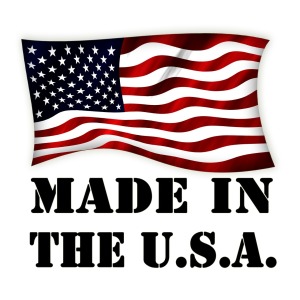On January 24, 2016, the Las Vegas Market kicked off its winter show. Over the span of five days, attendees explored 40 floors of furniture and home decor. More than 330 new resources were displayed throughout 146 showrooms, which resulted in record levels of leasing. However, the biggest takeaways from the event were opportunities to learn about new trends. The following are among the best trends noticed at the furniture show.
Domestically-Made Products
 In the past, it was not uncommon for American furniture retailers to sell products manufactured and shipped from overseas. However, countries such as China no longer offer competitive enough prices to warrant such off-shore business models.
In the past, it was not uncommon for American furniture retailers to sell products manufactured and shipped from overseas. However, countries such as China no longer offer competitive enough prices to warrant such off-shore business models.
On-shoring, a process in which products and services are rendered domestically, is growing as a result of costly overseas transportation and labor expenditures. The trend dates back to 2014 and has indicated positive growth ever since, according to Technavio’s latest US home furniture market report. In 2016, “Made in the USA” will become more of a norm, with technologies making it possible for furniture retailers to manufacture and obtain products with a smaller workforce.
In addition, home furnishing business owners are expected to take more advantage of just in time (JIT) shipping. JIT helps manufacturers reduce inventory costs by acquiring products as needed, rather than holding onto surplus, a dated strategy.
Technology in Brick and Mortar Operations
Brick and mortar companies will never cease to operate. Instead, business owners and managers will find new ways to integrate technologies into their daily operations to improve customer satisfaction. Among the services likely to improve the furniture buying experience are in-store checkout automation and driverless trucks. The use of big data to understand consumer buying trends is expected as well.
In terms of marketing strategies, retailers will use technology to strengthen the aesthetic and appeal of their stores. Marketing displays will be inspired by collected consumer data and images found online, while what products are made available will be driven by what customers are likely to purchase as well as their competitiveness against other products.
Further, technologies that are used in daily life will be impactful in brick and mortar businesses. Active participation on social media, for instance, is a powerful tool for carrying on conversations with consumers to learn what they like and expect of a company as well as learn about the most effective place to market. A company can inquire about how users are discovering them to strategize future promotional opportunities.
Millennial Shoppers
 In 2013, the American millennial population reached 76.6 million. The average annual household income of a millennial was $60,000, and the generation’s purchasing power was estimated at $1.68 trillion. According to Furniture Today, the population now sits at 79 million, making it imperative for furniture manufacturers and distributors to transition their focus to marketing to this demographic.
In 2013, the American millennial population reached 76.6 million. The average annual household income of a millennial was $60,000, and the generation’s purchasing power was estimated at $1.68 trillion. According to Furniture Today, the population now sits at 79 million, making it imperative for furniture manufacturers and distributors to transition their focus to marketing to this demographic.
Unlike baby boomers who value integrity, justice, practicality, duty, and family, millennial shoppers seek happiness, passion, sharing, discovery, and diversity. An effective marketing plan will take into consideration these factors and add content that illustrates the experience of purchasing and using a product. It will also offer supplemental tools that make millennial shoppers feel they have insider information, which makes them feel engaged.
Most importantly, furniture manufacturers must craft pieces that need limited marketing to sell the product. Instead, the millennial generation is more likely to purchase furniture based on its quality. Quality is typically shared by word of mouth, rather than promoted directly through a brand.
Technological Enhancements in Furniture
Prior to 2016, furniture offering electronics built into them were already available. The same can be said about furniture that makes life easier, such as power reclining chairs and furnishings with electrical outlets that give consumers the option to plug in their electronics. The Las Vegas Market makes it apparent that future technological features will carry out even more important tasks.
For example, the president of Furniture Sales of Mid-America predicts furniture stores carrying a line of massage chairs that do more than provide comfortable seating for their owners. He suggests they will have the capability to monitor stress levels and offer calming solutions, such as music suggestions that play instantly to lower blood pressure or to complement a recommended massage. He also alludes to furniture stores providing smart refrigerators and security alarm systems, which will give consumers a one-stop location to obtain all their home needs.
Internet Retailing
While there will always be a need for brick and mortar furniture stores, retailers and manufacturers must accommodate online shopping. In 2014, 80 percent of consumers purchased home furnishings over the internet, which made up nine percent of furniture sales and accounted for $9 billion when paired with bedding sales.
Half of consumers also relied on their smartphones to help them make purchasing decisions during and after their visit to a physical location. In that respect, avoidance of online shopping can damage the success of a business. A brick and mortar business does not need to transition its entire operation online. However, establishing a strategy for managing online shoppers will help companies maintain competitiveness and grow in the future.
